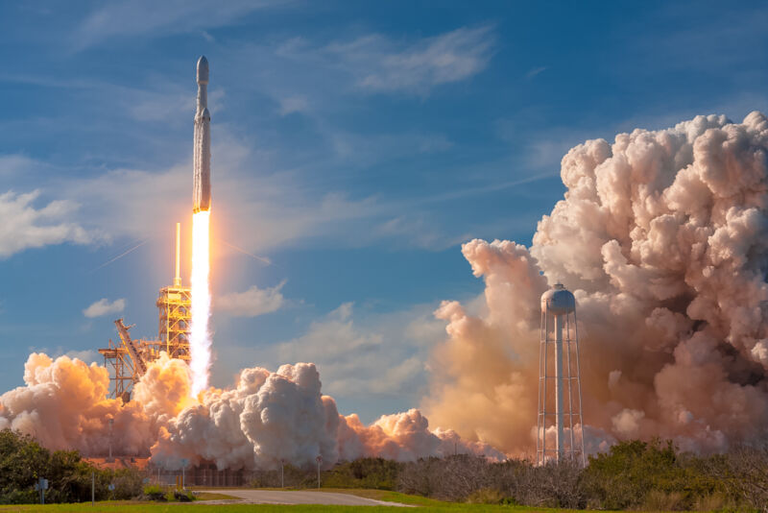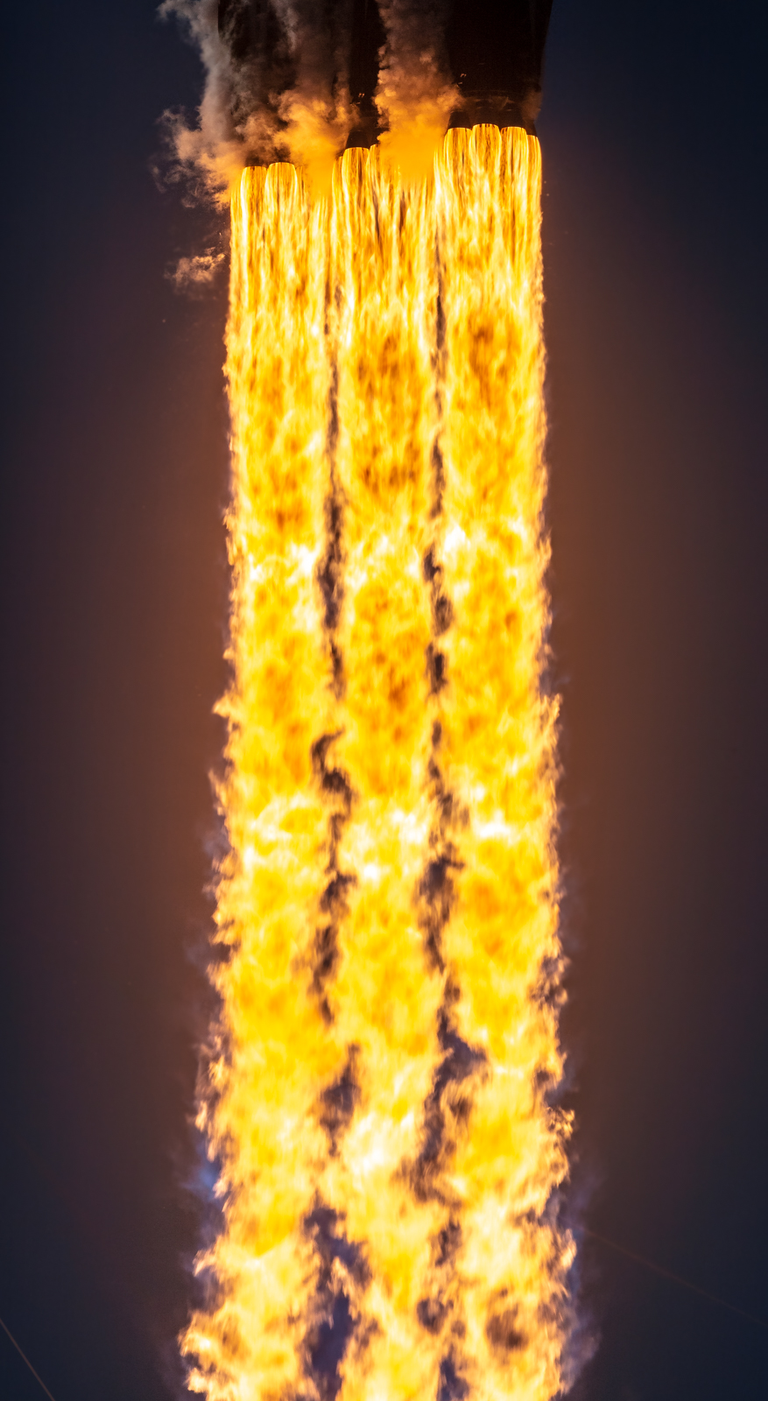Was the Falcon Heavy a mistake by SpaceX?
 IMAGES SURGES BY [https://arstechnica.com/
IMAGES SURGES BY [https://arstechnica.com/
As early as Tuesday morning, the Falcon Heavy will take flight for the first time since June 2019, ending a long period of inactivity for the world's most powerful, operational rocket. Under the power of 27 Merlin engines in its first stage, the rocket will carry two space technology payloads into orbit for US Space Force.
Ahead of this much-awaited USSF-44 launch, it is natural to ask why it has been more than 40 months since the rocket last flew. And perhaps more importantly, does this suggest that the Falcon Heavy—developed internally at SpaceX, at the company's own expense, for half a billion dollars—was a mistake?
But first, some details about the launch, which is set for 9:41 am ET (13:41) on Tuesday from Kennedy Space Center, in Florida.
Meet me at GEO
This will be SpaceX's first "direct-to-GEO" mission, which means the powerful Falcon Heavy rocket will launch its payload directly into a geostationary orbit nearly 36,000 km above the Earth's surface. Typically such payloads are injected into a transfer orbit, and then the spacecraft's onboard propellant is used to raise the vehicle to a circular geostationary orbit. In this case, however, Falcon Heavy's first and second stages will be doing all the work.
Not much is known about the two spacecraft launching on this mission for Space Force. The primary payload is classified. The secondary payload is a small satellite called Tetra-1, which is a prototype for a kind of satellite the US military hopes to fly one day in geostationary orbit—to do something.
In an emailed news release discussing the launch, Space Force was not particularly helpful with its description of the satellites: "The Long Duration Propulsive EELV Secondary Payload Adapter (LDPE ESPA)-2 and Shepherd Demonstration will carry a variety of payloads that will promote and accelerate the advancement of space technology for the benefit of future Programs of Record."
Thanks, guys, that's super clear. Maybe you could mix in a few more inscrutable acronyms next time.
What we do know is that this mission will require the Falcon Heavy's upper stage to operate for a far longer period than usual, with about six hours between the initial firing of its Merlin vacuum engine and a final firing. This will provide a good test of the upper stage's ability to perform for an extended period.
Why so long?
The long gap between flights has not occurred due to a shortage of Falcon Heavy rockets. At its essence, the Falcon Heavy consists of a core stage that is a modified version of a Falcon 9 rocket's first stage, and two side-mounted boosters that are somewhat less modified. There are other structural adaptations, but basically, SpaceX could manufacture (and reuse hardware) for just about as many Falcon Heavy rockets as the market desires.
It's just that, well, there has not been an overwhelming desire. To put the demand for Falcon Heavy into perspective, in the 40 months since the last heavy launch, SpaceX has flown the Falcon 9 rocket 111 times. That does not mean there is 100 times the demand for the Falcon 9, but it suggests that by continuing to improve the performance of the single-core Falcon rocket, SpaceX eroded some of the potential market for Falcon Heavy when it was designed about a decade ago.
However, there is still demand. Of late, the problem has been delayed payloads. The USSF-44 mission was originally scheduled for December 2020. Another Space Force mission on the Falcon Heavy, USSF-52, was originally supposed to fly in October 2021. NASA's Psyche Asteroid mission was supposed to fly in September but was also delayed after the payload was not ready.
In truth, there is a reasonable amount of demand for a large rocket like the Falcon Heavy. On SpaceX's current manifest, there are 10 more Falcon Heavy missions between now and the end of 2024. Some of those may well get pushed back due to payload readiness, but there are customers out there.
Who is buying?
The short answer is the government. Including USSF-44, the next 10 most likely missions to fly on the Falcon Heavy include five flights for NASA, three for the US Space Force, and two primarily for commercial satellite customers.
The US military is especially keen to see a proven Falcon Heavy. While the Falcon 9 rocket is powerful, it does not have the ability to hit all nine of the Department of Defense's reference orbits required for its launch providers to hit. So with the Falcon Heavy, SpaceX is at an advantage in terms of bidding on military launch contracts. The only other operational US rocket capable of this is United Launch Alliance's Delta IV Heavy rocket, but it is retiring in two years. Its replacement, Vulcan, has yet to fly.
SpaceX's forthcoming Starship and Super Heavy booster, of course, will be able to reach all nine orbits. Although it is likely years away from a "stable" configuration required by the government, it is nevertheless on the way. Because of this, Falcon Heavy is likely to have a limited shelf life, said Todd Harrison, managing director for Metrea Strategic Insights.
And yet the Falcon Heavy has not spurred the development of a rash of new science missions. NASA simply has not set up the science community to take advantage of a low-cost, heavy lift rocket, said Casey Dreier, space policy director for The Planetary Society. "The incentive is just not there for scientists," he said.
Primarily, mission planners and scientists are concerned about keeping the cost of the spacecraft down, and controlling its mass. The decision on a launch vehicle is typically left to NASA and its Launch Services Program. The Falcon Heavy really has not been around long enough to shift that calculus. Dreier said there is a chance that the larger Starship vehicle—which will dramatically change mass and volume constraints for science missions—could eventually change how NASA selects science missions.
 IMAGES SURGES BY [https://arstechnica.com/
IMAGES SURGES BY [https://arstechnica.com/
But if Starship is the future the launch industry is headed for, the Falcon Heavy validated the approach. It was the first time a private company built and flew the most powerful rocket in the world. It proved that a vehicle with so many first-stage engines (27) could fly. (The Super Heavy first stage for Starship will have more (33) but not that many more.) And the video of two boosters landing side by side left a powerful imprint on the minds of the general public on the value of rocket reuse.
Lori Garver, who was deputy administrator at NASA when SpaceX began working seriously to develop the Falcon Heavy, said the rocket changed the discussion among space policymakers of what commercial space can do. She just wishes the discussion would change faster. "The Europa Clipper launch moving from SLS to Falcon Heavy is a reality-based space policy decision," she said. "But we need more of those."
A mistake?
So was the Falcon Heavy rocket a mistake? That was the question posed originally by this article.
Let's consider another rocket with three cores, the Delta IV Heavy, operated by United Launch Alliance. Before the Falcon Heavy came along, this was the only US booster capable of hitting all of the desired orbits for the US Department of Defense and was used for the heaviest NASA science missions. The Falcon Heavy has now supplanted all of those functions, and it flies at the cost of one-third to one-half that of the Delta IV Heavy.
Since its debut flight in 2004, the Delta IV Heavy has flown 14 times. It will retire in two years, mainly because it is expensive to operate, with a total of 16 launches. It seems plausible that the Falcon Heavy will more than exceed that total in half the time before eventually giving way to Starship.
So by this measure alone, the Falcon Heavy was not a mistake. Rather, it was a glimpse into the future.